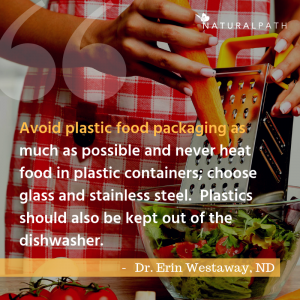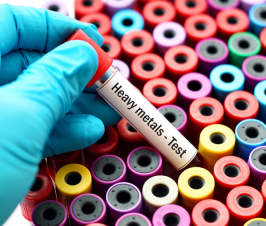Erin Westaway, ND
Why so tired?
I often ask my clients what would be different if they felt well. The most common answer is, “I would have more energy – I’m just so tired.” The truth is there are a lot of reasons why this could be. Besides the obvious lack of sleep – chronic stress, infections, an inflammatory diet, and hypothyroidism are high on the list of possible causes for fatigue. What is less often talked about is how exhausted environmental toxicity can make you feel. The field of toxicology is a massive one. Just about any substance in the wrong quantity can be harmful.
Multitude of ways environmental toxins cause fatigue
There are a lot of ways that environmental toxins can cause fatigue. Some interfere with nutrient absorption; others suppress the immune system leading to chronic low grade infections; some are actually directly damaging to the brain, liver, digestive tract, or kidneys; others destroy the mitochondria (the engine of the cell); many disrupt hormone balance. Below are some common exposures to look out for and some tips on how to keep your body clearing things out on a regular basis.
Common exposures and some tips to keep your body clearing things out on a regular basis
Toxic metals
Mercury, lead, and arsenic are 3 common heavy metals that can really slow you down. They can all damage the brain and the cardiovascular system. Mercury and lead also suppress immune function and cause hypothyroidism. Lead can make it difficult to make the blood cells that carry oxygen to your organs. All of this is a recipe not just for physical fatigue, but for difficulty thinking clearly. The most common source of mercury in the body is from amalgam dental fillings (the ones that look silver). This is a complex exposure that may require having fillings replaced, but should only be done at your doctor’s recommendation and with a dentist who specializes in doing this safely. Other common mercury exposures come from seafood or face whitening creams made overseas. Lead has been showing up lately in municipal water supplies and can also be found in toys from China, some blue pottery, and houses built before the mid 1970s where lead paint breaks down and gets into dust. Arsenic is most commonly found in high levels in rice and non-organic chickens. Electricians, plumbers and other professions working directly with metals and/or doing a lot of welding, are also at high risk for reaching toxic levels of exposure. Our bodies store these sometimes for decades, so an old exposure can cause problems many years later. If you think this might be a problem for you there are blood and urine tests that can help your doctor make an assessment.
 Plastics
Plastics
Plastics are everywhere and increasingly they are even in our food in small particles you can’t see. There are several compounds in plastics making them dangerous for humans. Those that are very likely to cause fatigue are the compounds we call endocrine disruptors – they interfere with your hormones by either acting like a hormone or interacting with hormone receptors. They are also considered “obesogens” which means that they disrupt metabolism and encourage the body to gain weight. Phthalates and BPA are some of the most commonly known problem players in the world of plastics, but don’t get too excited about that BPA free plastic just yet. Many BPA free plastics contain BPS or BPF, which can actually be worse than BPA. The American Academy of Pediatrics actually put out a statement this year expressing concerns about chemicals from plastic food packaging leaching into food and harming children. Avoid plastic food packaging as much as possible and never heat food in plastic containers; choose glass and stainless steel. Plastics should also be kept out of the dishwasher.
Cosmetics, Hygiene, and Cleaning Products
The ingredients added to your cleaning products and cosmetics would likely scare you if you knew what they were. Many cosmetics and personal hygiene products contain some of the same problem chemicals as the plastics above. They also commonly contain ingredients such as parabens, which are powerful hormone disruptors, and formaldehyde, which is highly toxic to the liver. Because these words aren’t used directly, it can be hard to know which ingredients are safe. We absorb a lot through our skin from personal hygiene products, perfume, and cosmetics; this can be a major source of irregular hormonal patterns leading to significant fatigue, irregular menstruation, low testosterone, and conditions such as endometriosis. Other products such as household cleaning products are also culprits here. Look for products with ingredients you know (this can be quite a challenge!) and avoid those that contain “fragrance”. If a product is labeled “natural” or “70% organic” this does not mean it only contains non-toxic ingredients. A great resource for safer products can be found at www.ewg.org, which has put together a database rating the safety of many major products in these categories. You might be surprised what you discover!
Water
The safety of municipal water supplies has been called into question quite a bit lately. The town of Flint in Michigan has made water toxicity national news with its lead contamination, but since then many other cities have been found with dangerous levels. PFAS are chemicals from manufacturing processes that are being found in dangerous levels in several cities as well. The chlorine that is used to kill bacteria and viruses in water can harm your thyroid (even just from showering in the water) and a slow thyroid is a very common cause of fatigue. Most municipal water supplies don’t have anything in place to test for, or filter out drug residues that get sent down the drain, so water can contain some dangerous substances that add up over time. Getting a water filter that is a gravity fed carbon system or reverse osmosis will provide the safest water. A chlorine filter for your shower can be a great way to protect your thyroid and is fairly inexpensive.
Mattresses
Your mattress is supposed to be the place where you go to rest, heal, and rejuvenate. We (ideally) spend more time on our mattresses than almost any other location. Mattresses are also commonly one of the most toxic elements in a home. Memory foam mattresses tend to be the most problematic. As mattresses are expensive, you might not be able to easily replace yours right away, but when it is time for a new mattress, consider looking for one that is produced from organic materials without chemical processing. If you have recently bought a new mattress and aren’t feeling well, consider sleeping somewhere else for a while to see if it helps. I have seen several clients get sick from new mattresses, waking up exhausted instead of refreshed, so please choose carefully!
Toxic exposure got you down? Consider talking with a naturopathic doctor who is trained in environmental medicine
If you think that toxic exposure now, or in the past, might be part of what is keeping your energy low, consider talking with a naturopathic doctor who is trained in environmental medicine. Because it is impossible to avoid exposure completely, there are things that can help your body get rid of the things we accidentally take in. Eating an organic diet will limit pesticide exposure while eating a diet high in brightly colored fruits and vegetables will provide essential nutrients for helping your body cope with exposure. A high fiber diet helps to bind up toxins so they are removed through your bowels. Avoiding constipation is important so drink plenty of (filtered) water. If you live in an area prone to exhaust fumes from the highway or smoke from fires, a good air filter is a must. Regular exercise helps in a number of ways, especially if you work up a sweat. Regularly sweating in a sauna can also help you excrete toxins through your skin. Often, the dietary recommendations above, and regular sauna sessions can be enough to restore energy. We are incredibly resilient, but only as healthy as the environment in which we live!
 Dr Erin Westaway, ND is a naturopathic physician with a private practice in Seattle, WA, where she focuses on fertility, preconception care, and teaching parents how to grow healthy families. A portion of her practice is dedicated to primary care medicine. She recently founded Well Conceived – a virtual natural fertility coaching program.
Dr Erin Westaway, ND is a naturopathic physician with a private practice in Seattle, WA, where she focuses on fertility, preconception care, and teaching parents how to grow healthy families. A portion of her practice is dedicated to primary care medicine. She recently founded Well Conceived – a virtual natural fertility coaching program.
Dr. Westaway came to medicine through her love of learning, her fascination with the impeccable balance of nature, and her curiosity about the human condition. She studied English literature at Bowdoin College and taught public school before returning to school to become a physician. After graduating from Bastyr University, she completed a two year residency under Dr. Molly (Linton) Niedermeyer at one of the oldest naturopathic clinics in the country, where she continued to practice for several years.
Her private practice was born out of a desire to create a medical practice that allowed enough time and support for true transformation of health. To accomplish this, Dr. Westaway draws on her extensive knowledge of physiology and biochemistry, her awe of human capacity, her love of story, and her first hand knowledge of dealing with chronic illness. In addition to naturopathic training, she has extra training in biofeedback, homeopathy, craniosacral therapy, visceral manipulation, environmental medicine and fertility. Dr Westaway can be found online at www.prescribelifemedicine.com and www.wellconceivedhealth.com

















